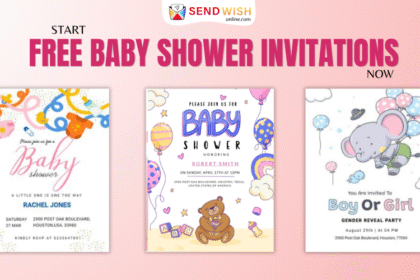
User engagement is the ultimate measure of success. You can have a beautifully coded app, but if users don’t stay engaged — they’ll uninstall it in seconds.
That’s where UI/UX design plays a powerful role. A great mobile app experience doesn’t just look good — it feels right, flows naturally, and keeps users coming back for more.
If you’re looking to improve retention, usability, and delight in your app, here are proven UI/UX design tips to boost mobile engagement and user satisfaction.
1. Simplify Onboarding to Reduce Drop-Off
First impressions matter. A confusing or lengthy onboarding process can drive users away before they even experience your app.
Tips:
- Use guided walkthroughs or interactive tutorials
- Keep the sign-up process short — allow social logins
- Highlight key features gradually using progressive onboarding
Goal: Make it effortless for new users to get started and see immediate value.
2. Focus on Intuitive Navigation
Navigation is the backbone of any app experience. If users can’t find what they need quickly, they’ll abandon your app.
Tips:
- Follow familiar navigation patterns (tab bars, hamburger menus)
- Maintain consistent placement for buttons and icons
- Use visual hierarchy to guide users naturally
Goal: Create a seamless flow that feels second nature to users.
3. Design for Thumb-Friendly Interactions
Most users interact with apps using one hand. If your app isn’t designed for thumb reach, you’re making it harder for them to use.
Tips:
- Place primary actions within thumb zones
- Avoid placing important buttons at the top corners
- Test layouts across multiple screen sizes
Goal: Make every interaction comfortable and effortless.
4. Use Microinteractions to Delight Users
Microinteractions — those small animations, button effects, and feedback moments — can make your app feel alive and responsive.
Tips:
- Add subtle animations when actions are completed
- Use sound or vibration feedback wisely
- Keep transitions smooth but fast
Goal: Turn functional moments into delightful experiences.
5. Personalize the Experience
Users love apps that feel tailor-made for them. Personalized UX not only improves satisfaction but also drives engagement and retention.
Tips:
- Offer custom content based on behavior
- Allow users to set preferences or themes
- Use AI-driven recommendations when possible
Goal: Create a connection that feels human and meaningful.
6. Optimize App Performance and Speed
No matter how beautiful your app looks, users will abandon it if it’s slow or buggy. Performance directly impacts engagement.
Tips:
- Compress images and assets for faster loading
- Avoid unnecessary animations that slow down transitions
- Test your app across different devices and networks
Goal: Deliver a lightning-fast experience users can rely on.
7. Maintain Visual Consistency
Consistency builds trust. From colors to icons to typography, maintaining visual harmony makes your app easier to use and remember.
Tips:
- Create a design system or UI kit
- Stick to a limited color palette
- Ensure uniform spacing, button styles, and typography
Goal: Make users feel familiar and confident across every screen.
8. Use Meaningful Empty States
Empty screens (like “no data yet” or “no notifications”) are opportunities to guide users, not dead ends.
Tips:
- Add helpful tips or illustrations on empty states
- Encourage users to take the next action (e.g., “Add your first task”)
- Use friendly microcopy and visuals
Goal: Turn potential drop-off moments into engagement opportunities.
9. Prioritize Accessibility
Accessibility isn’t just an option — it’s essential for inclusivity and better usability for everyone.
Tips:
- Ensure contrast ratios meet accessibility standards
- Support screen readers and larger font options
- Use clear, concise text for buttons and actions
Goal: Design experiences that everyone can enjoy — regardless of ability.
10. Encourage Continuous Feedback
Your users are your best testers. Encouraging feedback helps you evolve your app based on real needs and experiences.
Tips:
- Add in-app feedback forms or rating prompts
- Monitor user behavior through analytics tools
- Iterate based on feedback, not assumptions
Goal: Build an app that grows smarter and more user-friendly over time.
1. Understanding User Needs and Behaviors
A seamless digital experience starts with understanding who the users are and what they need. Before a single screen is designed, UI/UX designers conduct extensive research to uncover user goals, motivations, and pain points.
Key methods include:
- User interviews – to understand real-life challenges and expectations.
- Surveys and questionnaires – to gather data from a broader audience.
- Competitor analysis – to identify gaps in existing market solutions.
- Persona creation – to represent different user types.
This research helps designers create products that not only look good but also solve real problems effectively.
2. Mapping the User Journey
Once user research is complete, designers map the user journey — the path a user takes to achieve a goal (like purchasing a product or signing up for a service).
By visualizing each touchpoint, designers identify areas of friction and opportunities for improvement.
Example:
In an e-commerce app, the journey may include:
- Browsing categories
- Viewing product details
- Adding to cart
- Checkout and payment
The goal is to ensure this entire journey feels smooth, intuitive, and enjoyable.
3. Crafting Intuitive Information Architecture
Information Architecture (IA) is the backbone of a seamless experience. It determines how content is structured and organized so that users can find what they need without confusion.
Good IA means:
- Logical navigation menus
- Clear categorization of content
- Consistent labeling and naming conventions
- Easy access to frequently used features
A well-organized structure makes users feel in control — and that’s the foundation of great UX.
4. Wireframing and Prototyping the Experience
Before designing the final visuals, designers create wireframes — simplified blueprints of app or website screens.
Wireframes focus on layout, hierarchy, and user flow, ensuring every element is strategically placed. Once approved, designers move on to interactive prototypes that simulate real user interactions.
Benefits of prototyping:
- Early feedback from clients and users
- Quick testing of ideas
- Reduced design and development time
Prototyping ensures the experience works perfectly before developers write a single line of code.
Conclusion
Improving mobile app engagement starts with understanding how users think, feel, and interact. A well-designed UI/UX doesn’t just please the eye — it keeps users coming back because it feels right.
From simplified onboarding to personalized content and microinteractions, every design choice can make a difference in engagement and retention.




